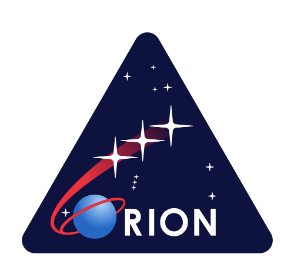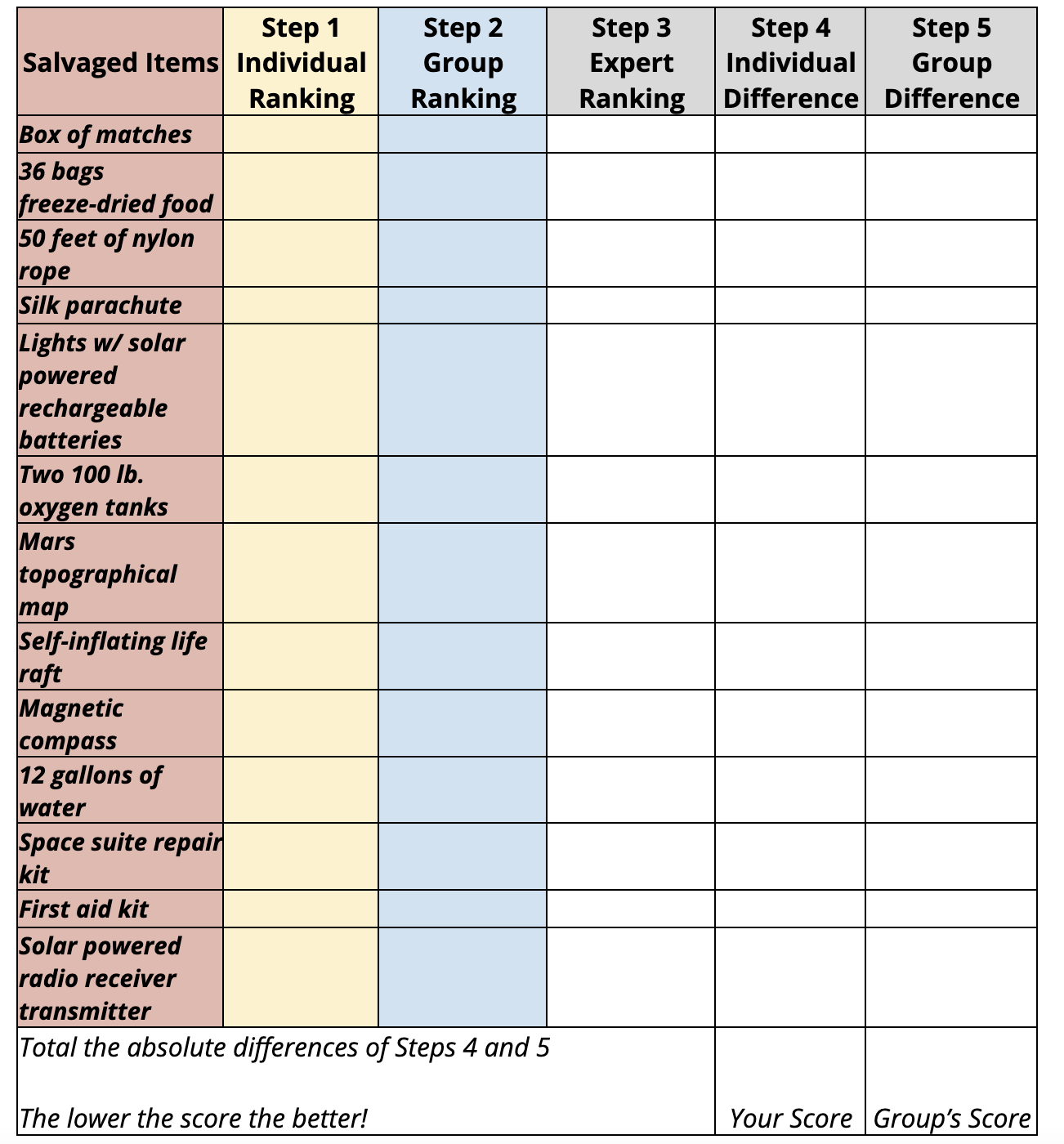Rigel Down Simulation
Rigel Down
A Group Decision Making Simulation
The Situation:
The year is 2035 and you are part of a four-member team traveling toward the planet Mars on board NASA’s new Orion spacecraft. Orion is built to take humans farther than they’ve ever gone before. The ship is similar in shape, but larger than the capsules used during the Apollo program. Attached, or docked, to Orion is the Mars Surface Access Module (MSAM), which you will use to land on the surface of Mars. This module has been named Rigel after the brightest star in the constellation of Orion.
As your spacecraft enters Mars’ orbit, you spot the International Martian outpost. This outpost has grown, having been built piece by piece during past missions. You are excited to see the outpost. It is located on a crater rim near the planet’s South Pole, in near-constant sunlight. This location is not far from supplies of ice that can be found in the cold, permanently shadowed part of the crater.
Upon boarding Rigel and separating from Orion, you prepare to descend to Mars’ surface. Suddenly, you notice that there is a problem with the thrusters. It is a rough entry but you land safely, but off course, about 200 miles from the outpost. During the re-entry and landing, much of the equipment aboard was damaged, and, since survival depends on reaching the outpost, the most critical items available must be chosen for the 200 miles trip. As you look across the reddish, dusty surface of Mars, you realize your survival depends on reaching the outpost!
You know the Mars atmosphere is roughly 100 times less dense than Earth's atmosphere providing little protection from space radiation. The environment is unlike any found on Earth. The regolith, or Martian soil, is a mixture of materials that includes sharp, glassy particles. The gravity field on Mars is 62% less than Earth’s. The magnetosphere of Mars is far simpler and less extensive than that of the Earth. More than 80 percent of Mars is made up of heavily cratered highlands and dendritic networks of valleys. Temperatures vary widely on Mars. It can be as cold as -195°F at night at its poles and as hot as 70°F during the day at its equator.
You have survived the landing. Your next concern is reaching the outpost…
Step 1: Individual Ranking
Below is a list of 13 items available to the crew. Your task is to rank these items from 1 to 13 according to their importance to you and your crew in order to reach the outpost. Place the number 1 by the most important item and continue ranking the items to number 13, the least important.
This is the individual part of the exercise, so please do not communicate with anyone for now.
You will have 10 minutes to complete this task. The facilitator will give you a 2 minute warning.
NOTE: Don’t even try Googling the answers. The items on this list have been exclusively designed jointly by NASA scientists and Cornell Team and Leadership Center through our academic collaborations. Besides, what is the fun in spoiling a great learning experience?
Step 2: Group Ranking
This task is similar to the previous step, but it will be performed by your whole group. Your group of 8 members is the crew of the fallen Rigel landing module.
This task will be an exercise in group decision-making, and your group will employ the group-consensus in reaching its decision. This means that the ranking given to each of the 13 items must be agreed on by every member before it becomes part of the group decision. In many cases consensus is difficult to reach. Therefore, not every ranking will meet everyone’s complete approval, but each number assigned must be one that every member is willing to accept.
Your facilitator will present a simple, yet practical voting tool to reach group consensus. You will have approximately 25 minutes for the group task.
Group Consensus Guidelines
Your group will supply a number of differing perspectives and ideas that each member might have lacked when working independently during the first part of the exercise. Enter the group task with a commitment to use these perspectives to arrive at the best possible solution. Shoulder your share of responsibility for the group’s success, and discuss the task and process openly and candidly. Use flexible patterns of communication so that all members of your group will be able to participate equally and will feel free to speak up when they have a need to do so. Minority opinions could well supply the information or logic that was missing.
5 Keys to Reaching Group Consensus (Pfeiffer / Nemiroff & Pasmore, 1989)
-
Avoid over-arguing for your own individual judgment.
-
Avoid changing your mind if it is only to reach an agreement or avoid a conflict. Support solutions with which you agree or are able to live with.
-
In reaching a decision, avoid conflict-reducing techniques such as a majority vote, averaging, or trading.
-
View differences of opinions as a help rather than a hindrance in decision-making: the more ideas expressed the greater the resources.
-
When there is quick agreement, do not assume that the answer is correct. Discuss the reasons for the decision and explore other possibilities.


